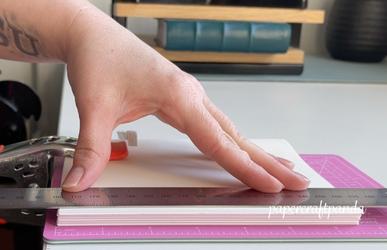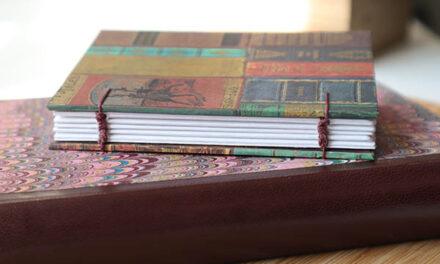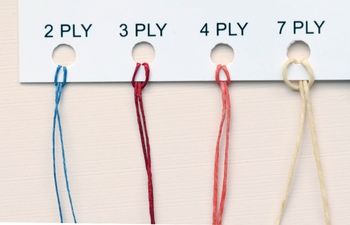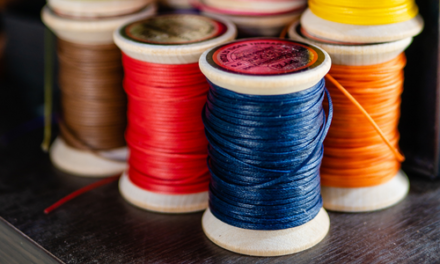Have you ever tried to trimming text blocks by hand? If so, you probably understand how hard it can be to keep the text block still with one hand while trimming with the other. One small slip and the edge of your book could be crooked or, at the very worst, ruined.
In a perfect world, every book maker would have access to swing arm guillotines and ream cutters with clamps to hold their books in place while trimming. Sadly, the cost of this bookbinding equipment can make it impossible for everyone to afford. Even so, don’t be discouraged. While cutting each page can be annoying, it’s not impossible.
In this post, I’ll show you what I do to make trimming text blocks by hand easier, plus some additional advice to help with the process overall.
Spring Clamps
Metal spring clamps are an inexpensive way to make your life incredibly easy. I use a pair 6″ heavy duty clamps with a 3″ jaw opening. Each tip is covered in a soft orange PVC to prevent indentation marks. They’re perfect for beginner to intermediate binders (and beyond).

If you’re not already sold, here are a few more reasons I use these clamps almost every day:
- Inexpensive. I paid around $13 for the pair.
- Strong. Can hold books up to 12mm in place without so much as a wiggle.
- Portable. It’s easy to move them between work areas and I can even take them traveling.
- Easy to configure. These things don’t just hold things in place. I can also use them to stand a book up or as an impromptu press.
Spring clamps are available in tons of different sizes. I bought mine at a local hardware store, but they’re also available online.
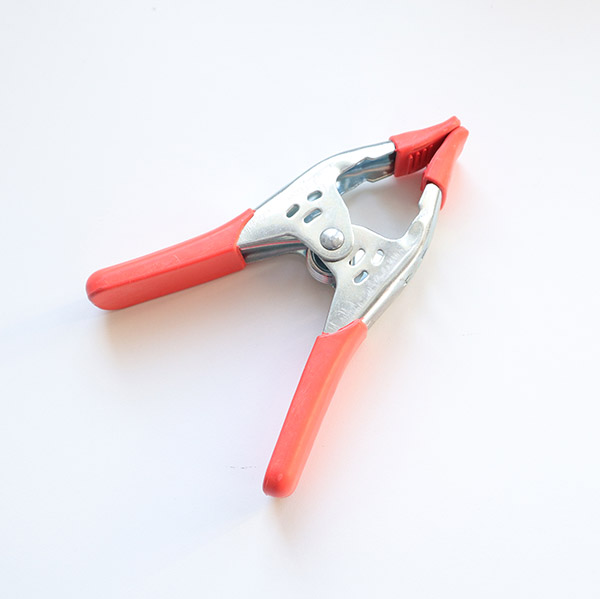
C-clamps
For books thicker than 12-15mm, I like to use a C-clamp. C-clamps are adjustable, inexpensive and can open wide while maintaining a strong hold. They’re locked in place and less likely to slip, which is good when I’m working on a binding that I absolutely cannot mess up. They’re perfect for intermediate to advanced binders.
Some things to consider when buying c-clamps:
- Avoid metal screw c-clamps. While these are stronger, they can be too strong for a book. Over tightening can lead to indents and irreversible damage to delicate end sheets.
- Try to find trigger clamps. These types of clamps use a “trigger” that is tightened with one hand to slowly compress the book. This gives you the flexibility to apply less pressure to delicate papers and more pressure to hard papers.
- Choose a set of trigger clamps with at least a 24″ bar. The bar is what allows the clamps to open wide, and can be useful if you have work surfaces with different thicknesses.
- C-clamps are really only good for clamping something in place. While they can be used to press a book, they’re not usually the best choice for standing books upright while working.
C-clamps are also available in different sizes and shapes, so you’ve got a lot of different options. I prefer to use the Dewalt trigger c-clamps, but you can go with whatever works best for you.
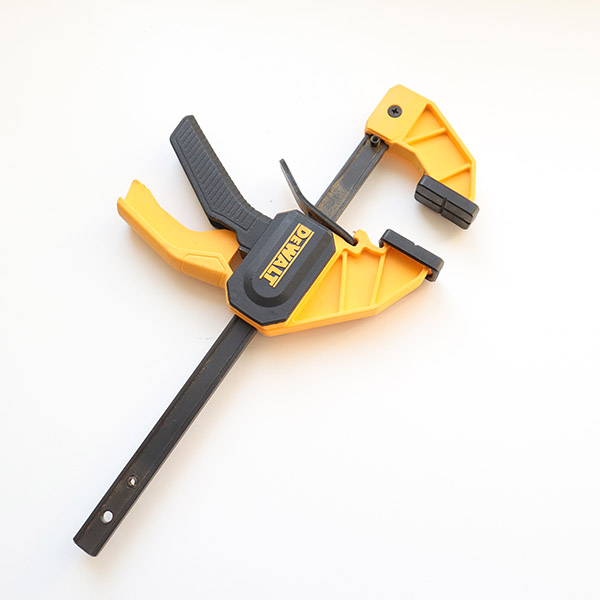
A few more helpful tips for trimming text blocks
- When buying spring clamps, avoid hard plastic. Plastic clamps may be cheaper, but they usually have plastic tips that will leave indents and marks on the book.
- If you want to make precise measurements (and why wouldn’t you?), avoid using rulers with cork or rubber backing. While the no-slip backing seems like a good idea, it actually lifts the ruler up from the table just enough to allow an Olfa blade to slide under it. This leads to a slanted cut that will drive you crazy!
- Clamp the book onto a cutting mat positioned at the edge of a table. This will give you the strongest hold.
- If a clamp has a 3″ jaw opening, use it on books that are 1-1/2″ or less. Opening the jaws super wide can actually weaken their hold.
- Most of my mistakes happen when the ruler slips slightly. To avoid this, stand above the book as high as possible and place downward pressure, fingers opened slightly, while holding the ruler in place. If you’re short like me, try to find a table with a height even to your upper thigh.
- If you absolutely cannot use clamps to help hold a book in place, try practicing on stacks of scrap paper in different thicknesses. This can help you build the muscles and balance required to hold a text block steady while edge trimming.
I hope this post was helpful! Good luck!
More bookbinding goodness
✨ What tools do I need to get started bookbinding?
- Bookbinding Tools & Supplies Quick Start Guide – learn all about book making tools, which to buy first & where to go online
- Pick up my popular Complete Starter Bookbinding Tools Kit – all the bookbinding essentials in one spot
🌟 Looking for a simple way to start making books?
Try a Complete Book Materials Kit. Each one has everything you need (+ tutorials & videos) to make a beautiful book without all the fuss.
Thank you for taking me along on your book making journey!
Misty
